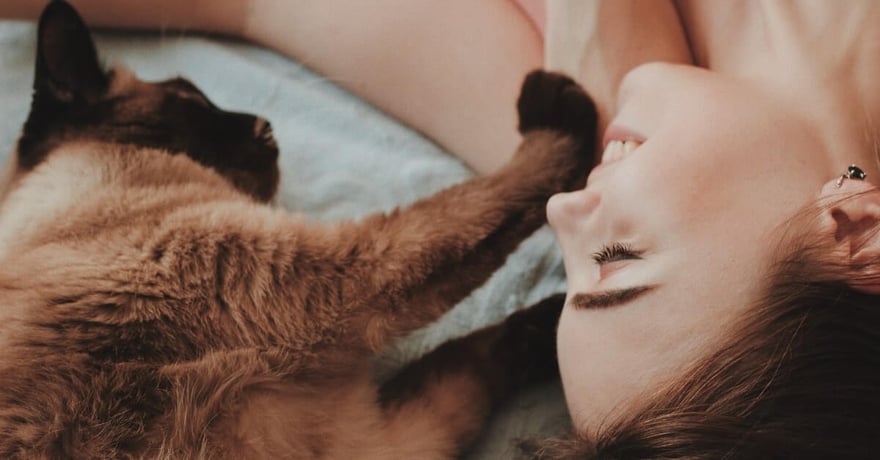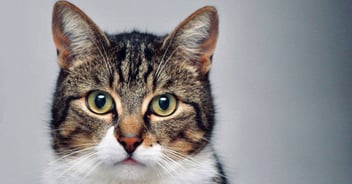Should You Get Cat Insurance in Canada?

As a cat owner, you know firsthand how much joy pets bring to our lives. In fact, it’s estimated that 38% of Canadian households own a cat. This is the equivalent of approximately 7.9 million kitties across the country.
Yes, Canadians sure do love their pets!
Yet despite cat ownership being on the rise, less than half of all pet owners take their furry friend to the veterinarian regularly and in a 2022 study researchers found that only around 3% of Canadian cats and dogs have pet insurance.
Of course, these numbers do not reflect how we care for our cat’s health. Nor do they show the love we have for our cats - or the love cats have for us. Instead, what these statistics show is the gap in understanding that often exists when it comes to Canadian cat insurance.
Luckily, we're here to help!
Read on to learn why you should have cat insurance in Canada and better understand how to choose the right pet insurance plan.
Is Cat Insurance Worth It?
Adding a cat to your family is exciting. After all, who doesn’t want a sweet-natured kitty to cuddle and play with? If we are lucky, a cat will be with us for between 12 - 18 years, filling our homes with meows, purrs, whisker kisses, laughter, and love.
Considering how long-lived cats are, it’s surprising then to see so few pet parents sign up for cat insurance. You yourself may have wondered, “Is cat health insurance worth it? Do I really need pet insurance if my cat lives indoors?” Or maybe you’ve only just even heard that cat insurance exists! To answer these questions, let’s look at why cat insurance is always a good idea.
Top 5 Benefits of Cat Insurance
1. Peace of mind
Did you know?
The average annual cost to own a cat in Canada hovers around $2,542. This covers basic care necessities, such as food, toys, vaccines, bloodwork, dental cleaning wellness treatments, pet insurance, etc. Kittens are even more expensive, sitting at between $3,091 and $3,231 during the first year of life, according to the Ontario Veterinary Medical Association.
It’s certainly not pocket change. But it is manageable when planned for in advance. Yet what about those unexpected costs?
Uh oh!
Accidents and illness can strike at any moment. Unfortunately, you never know when your cat will accidentally swallow something they shouldn’t and run up a large veterinary bill. Cat insurance gives you peace of mind that when the unexpected happens, your fur baby can be protected.
It’s always important to read the policy of any pet insurance coverage you are considering to understand what’s covered and what’s not to get the right level of protection for you and your cat.
2. Budget your money with small monthly fees (instead of a big one)
Secondly, cat insurance is beneficial because it allows you to budget effectively.
For example, do you buy all of your groceries once per year? Probably not. That would be very expensive. Instead, you likely spread your grocery spending out much more evenly.
Pet insurance works in a similar way.
With monthly premiums, there is less sticker shock at the veterinarian’s office. Cat owners invest a little each month and their pet insurance policy helps with unexpected veterinary costs to protect household budgets from unexpected veterinary costs.
3. Protect your savings account
Speaking of emergencies, do you have an emergency fund?
In a worst-case scenario, your cat might need emergency surgery. Or a big investment for costly medications. This can quickly drain a savings account. Protect your funds from out-of-the-blue costs with quality cat insurance.
4. Access to high-quality veterinary care
Another key reason why cat insurance is beneficial has to do with access to care. A cat who suffers from a major injury or illness will need to be seen immediately by a veterinarian. In some cases, there will be little wait-time before getting them the treatment they need.
But without pet insurance, you can find yourself in a heartbreaking position: pay for the care they need or pursue a less expensive, and potentially more heartbreaking, option. A cat insurance policy can allow owners to access the highest-quality veterinary care when it's needed most.
In fact, many cat insurance providers now offer Telehealth, too, which gives pet owners 24/7 access to veterinary nurses to discuss any health concerns you may have about your kitty
5. Choose flexible policies
Lastly, every cat is different.
Therefore, it only makes sense for cat insurance policies to reflect the furry customers they serve! Cat insurance provides reimbursements on eligible claims. How much reimbursement is determined by several things - including coverage limits, deductibles and the coinsurance percentage. Flexibility on things like these allows you to choose an insurance policy that’s right for you and your pet.
Not planning for your cat’s long-term health needs can be far costlier in the long run.
Common Cat Conditions and Emergencies
When sharing your home with a cat, some things are to be expected: meowing at dinnertime, their love and affection, lots of fur in your home. You get the idea.
However, many people are not prepared for some of the unexpected financial situations that accompany owning a cat. After all, cats are a lifetime commitment. They get sick just like us humans do.
Here is a list of the some of the most common cat health problems you are likely to face at some point throughout your kitty’s life.
Vomiting and diarrhea
Throwing up is bound to happen. Like diarrhea, this could be caused by eating too fast or too much, a change in diet, or it can be the body’s way of expelling an unwanted substance. But if vomiting and diarrhea occurs for more than 12 - 48 hours, it’s time to see a veterinarian as soon as possible. Vomiting and diarrhea exams and treatments cost pet parents $300 - $600 annually. This is where having cat insurance can become a protective layer between you and unforeseen pet health costs.
Ingestion of foreign material
Next, it is a terrifying experience no cat owner wants to have. Suddenly, your cat is choking. Or pawing at their mouth and refusing to eat. Something is either stuck in their throat, stomach, or digestive tract.
Depending on the severity, cat owners might need to pay anywhere from $700 - $1,700 to have a veterinarian remove said ingested foreign objects.
Urinary tract infectious disease (UTI)
When a cat gets a bacterial infection in their bladder or urethra, UTIs occur. Most common in older female cats, urinary tract infection symptoms include: pain, loss of bladder control, inability to pee, excessive licking, and litter box avoidance. It can also cost approximately $200 - $400 per year to treat.
Kidney disease
According to Pet Health Network, 1 out of 3 older cats will be diagnosed with kidney disease. Those are high odds. Pet insurance can protect you from an unexpected $500 - $1,000 bill – yikes.
Mass
Imagine stroking your cat when you feel a bump on their skin. Instantly, your mind races but thankfully, most masses are benign. Yet the tissue will still have to be tested and possibly removed if the tumor is cancerous. Annually, this costs cat owners approximately $500 - $900.
Final Thoughts
As you can see, there can be large hidden costs associated with cat medical emergencies. That's why we at PHI Direct advocate strongly for pet owners to insure their pets. Even if it's through one of our competitors. Seriously.
From diagnosing and treating illnesses to recovering from unexpected accidents, cat insurance is the #1 way to protect your feline friend and your household budget from unexpected shocks.
At PHI Direct, we offer quality, affordable, pet insurance designed to ensure that more of Canada's cats (and dogs) can have the protection of pet health coverage and all of its benefits.
Posted on June 29, 2022 | Categories: Cats Pet Insurance Kitten
Share


